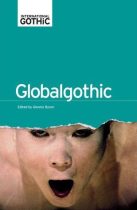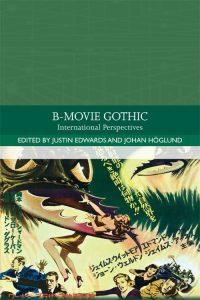2013
 If we agree that globalization translates into a quick and massive flow of capital, people, products, services and ideas across borders then cinema has been a global enterprise since its very beginnings. While local film industries may not share the global distributing potential of Hollywood, this does not mean that their production and post-production methods lag behind. The case of Thai film is not so different here, negotiating the dynamics of the global (e.g. filming equipment, skilled crew, or distribution formats) and the local (e.g. conceptualization, scriptwriting, or narrative formation). Contemporary Thai horror film has long been Thailand’s calling card on international film markets. Known in Thai as nang phi (ghost films), the films remain faithful to their narrow supernatural formula focusing most commonly on the figure of a vindictive phi tai hong (a spirit of the violently dead). Recently, however, the familiar anthropomorphic renditions of ghosts known from older Thai horror films seem to undergo the steady process of de-materialization and de-literalization, challenged through the intervention of technology and reappearing as critically constructed metaphors. This article argues that this change in the way these ghosts are portrayed on film can be seen as a result of the increasing globalization of Thai film industry per se, as well as a reflection on the broader economic, political and social transformations brought about by the powers of globalization in Thailand.
If we agree that globalization translates into a quick and massive flow of capital, people, products, services and ideas across borders then cinema has been a global enterprise since its very beginnings. While local film industries may not share the global distributing potential of Hollywood, this does not mean that their production and post-production methods lag behind. The case of Thai film is not so different here, negotiating the dynamics of the global (e.g. filming equipment, skilled crew, or distribution formats) and the local (e.g. conceptualization, scriptwriting, or narrative formation). Contemporary Thai horror film has long been Thailand’s calling card on international film markets. Known in Thai as nang phi (ghost films), the films remain faithful to their narrow supernatural formula focusing most commonly on the figure of a vindictive phi tai hong (a spirit of the violently dead). Recently, however, the familiar anthropomorphic renditions of ghosts known from older Thai horror films seem to undergo the steady process of de-materialization and de-literalization, challenged through the intervention of technology and reappearing as critically constructed metaphors. This article argues that this change in the way these ghosts are portrayed on film can be seen as a result of the increasing globalization of Thai film industry per se, as well as a reflection on the broader economic, political and social transformations brought about by the powers of globalization in Thailand.



 Category III films, introduced to Hong Kong audiences in 1988 as part of the new ratings system, were originally defined as productions reserved for adults over age eighteen. With the majority of plots focusing on stories of murder and sexual exploitation they were often dismissed as mindless low-budget gore-porn created solely for the purpose of generating quick profit for the producers and distributors. Such criticism did little to affect the films’ ratings, as the productions often met with favourable audience reviews and launched mainstream careers of some of their stars. The films also attracted limited academic attention, praised for their naturalistic rendering of the harsh social realities of the lower class life in the 1990s Hong Kong.
Category III films, introduced to Hong Kong audiences in 1988 as part of the new ratings system, were originally defined as productions reserved for adults over age eighteen. With the majority of plots focusing on stories of murder and sexual exploitation they were often dismissed as mindless low-budget gore-porn created solely for the purpose of generating quick profit for the producers and distributors. Such criticism did little to affect the films’ ratings, as the productions often met with favourable audience reviews and launched mainstream careers of some of their stars. The films also attracted limited academic attention, praised for their naturalistic rendering of the harsh social realities of the lower class life in the 1990s Hong Kong.
 The chapter offers a selective survey of twenty-first-century Asian Gothic. The main focus of the discussion is the most prominent contemporary trend involving reconfigurations of Asian folklore and the ghost story. More specifically, this chapter investigates literary and film narratives dealing with individual and collective trauma that revolve around the figure of the vengeful ghost, texts which reclaim animism as inherent part of Asian modernity, and Asian Gothic’s interrogation of gender dynamics and empowered women. The first section of the essay discusses the emergence of the female vengeful ghost as the dominant figure of fear in Asian horror films. The second section examines the portrayal of ghosts in literature of the region and the way their haunting engages with historical trauma and socio-cultural anxieties of the time. The final part investigates narratives that highlight the connection of women to shamanism and magic and proposes to read female spirituality in terms of empowerment.
The chapter offers a selective survey of twenty-first-century Asian Gothic. The main focus of the discussion is the most prominent contemporary trend involving reconfigurations of Asian folklore and the ghost story. More specifically, this chapter investigates literary and film narratives dealing with individual and collective trauma that revolve around the figure of the vengeful ghost, texts which reclaim animism as inherent part of Asian modernity, and Asian Gothic’s interrogation of gender dynamics and empowered women. The first section of the essay discusses the emergence of the female vengeful ghost as the dominant figure of fear in Asian horror films. The second section examines the portrayal of ghosts in literature of the region and the way their haunting engages with historical trauma and socio-cultural anxieties of the time. The final part investigates narratives that highlight the connection of women to shamanism and magic and proposes to read female spirituality in terms of empowerment.
